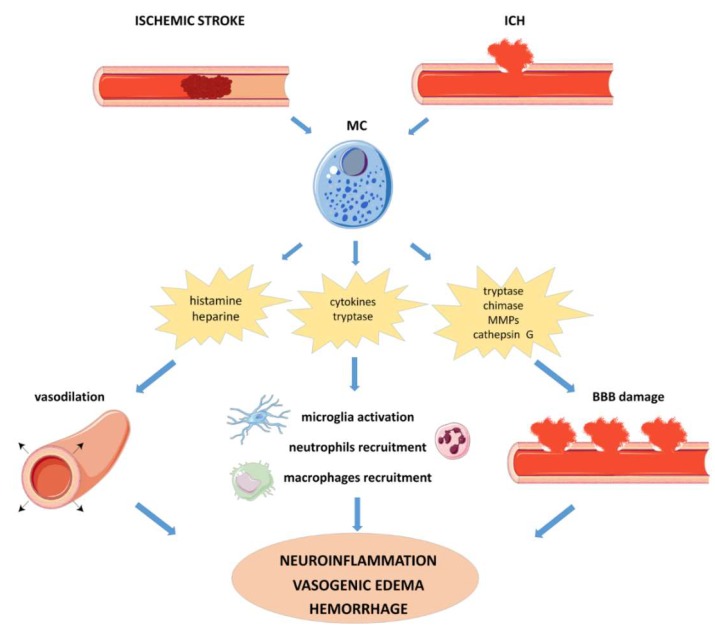Figure 1.
Schematic diagram showing the role of MCs in ischemic stroke and ICH. In the ischemic stroke, after cerebral blood vessel obstruction MCs sense alarm signals from injured parenchymal cells and become activated. In the ICH, the mastocytic activation is mediated by the leakage of blood products from the damaged vessel. Upon activation, MCs release a variety of vasoactive and proinflammatory molecules, including histamine, heparine, cytokines (TNF-α, ILs, chemokines), proteases (tryptase, chymase, MMPs, cathepsine G). The preformed and newly synthetized mediators induce vasodilatation, recruitment of peripheral immune cells toward the infarcted area, and BBB disruption, promoting a sustained neuroinflammation. In ischemic stroke, the pathological scenario supported by MCs activation has been involved in the hemorrhagic conversion mediated by rtPA treatment. In the ICH, the recruitment of inflammatory cells maintain and potentiate the initial BBB leakage, leading to an aggravation of hemorrhage and vasogenic edema. The mechanisms of MCs-mediated pathogenesis of stroke in the adult brain are valid also in the immature brain. BBB: blood–brain barrier; ICH: intracerebral hemorrhage; IL: interleukin; MCs: mast cells; MMP: metalloproteinase; rtPA: recombinant tissue plasminogen activator; TNF: tumor necrosis factor.

